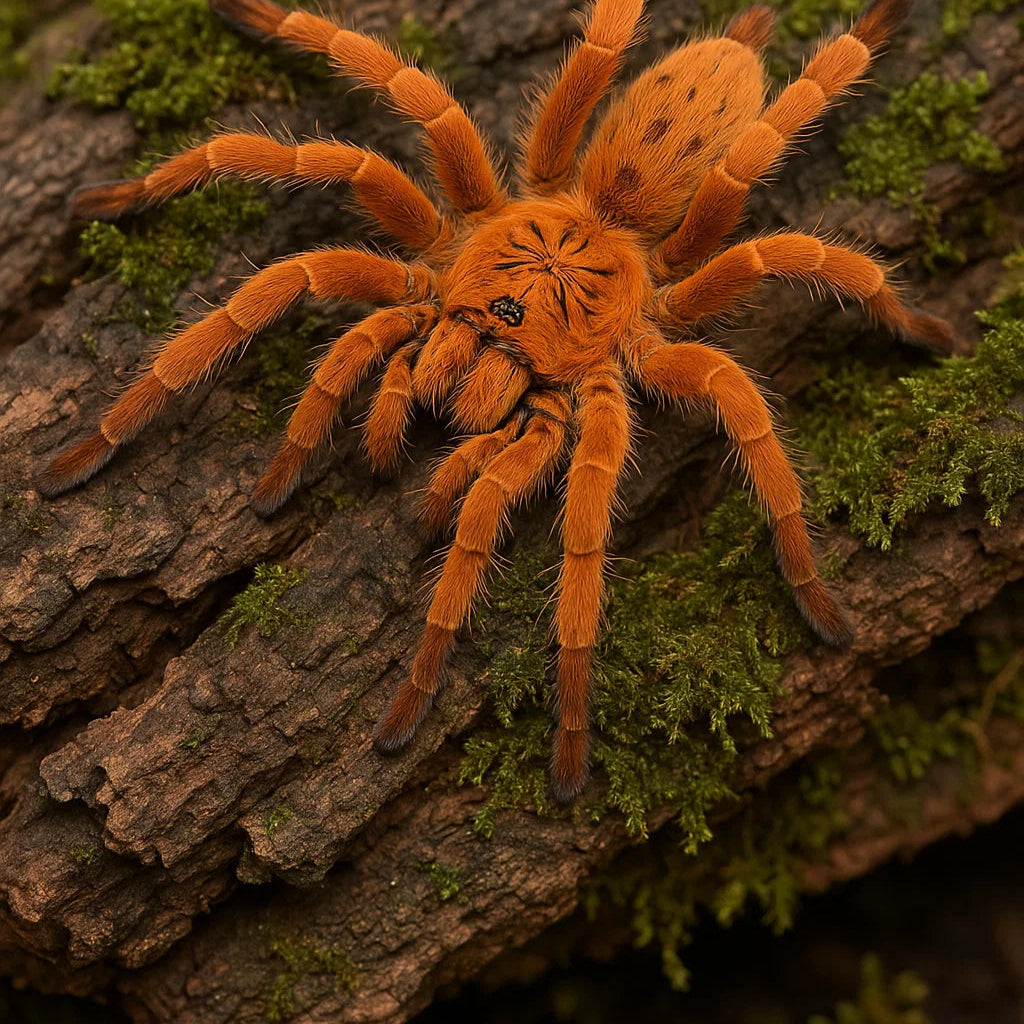Invert-Labs
Pterinochilus murinus RCF 'Usambara' - Orange Baboon Tarantula 'OBT' (Sling)
Pterinochilus murinus RCF 'Usambara' - Orange Baboon Tarantula 'OBT' (Sling)
Low stock: 3 left
Couldn't load pickup availability
SIP Code: IL-OW-FO-S-019
Scientific Name: Pterinochilus murinus RCF “Usambara”
Common Names: Orange Baboon Tarantula, OBT,
Shipping Monday – Wednesday
Origin / Habitat
Native to the Usambara Mountains of northeastern Tanzania. Found in dry scrublands, grasslands, and rocky outcrops where it creates silk-lined burrows beneath stones, logs, or surface debris. The environment is arid with seasonal rainfall and strong airflow, which informs its preference for dry substrate and heavy ventilation in captivity.
Category
Old World Fossorial / Terrestrial
Adult Size
Females: 4.5 – 5.5 in (11 – 14 cm) leg span
Males: smaller and slender
Temperament / Behavior
Exceptionally defensive and fast. Displays striking threat postures and will readily bite if provoked. Produces dense, extensive webbing that often covers the entire enclosure. Primarily a reclusive species that prefers a secure retreat and minimal disturbance.
Recommended Enclosure
Terrestrial enclosure with at least 4–5 in of dry substrate for burrowing and web anchoring. Include cork bark, rocks, or wood to allow structural webbing. Maintain strong cross-ventilation; avoid excess moisture or stagnant air.
Temperature & Humidity
Temperature: 75 – 82 °F (24 – 28 °C)
Humidity: 50 – 60 % RH (keep substrate mostly dry)
Ventilation: High airflow essential to prevent mold and mildew
Diet / Feeding Frequency
Slings: Micro crickets 2–3× per week
Juveniles: Small crickets or roach nymphs twice weekly
Adults: Medium crickets or dubia roaches once weekly
Remove uneaten prey within 24 hours.
Growth Rate & Lifespan
Fast growth. Females reach maturity in ~2 years and can live 10–12 years; males typically 3–4 years post-maturity.
Handling / Caution
Handling strongly discouraged. The species is notoriously reactive and capable of delivering a painful bite. Use tools for all maintenance and ensure secure enclosure latches.
Invert-Labs – Summary
The Orange Baboon Tarantula is one of the most iconic and visually striking species in the hobby. Its vivid orange coloration, complex web structures, and confident behavior make it a favorite among experienced Curators. This is a dry-climate species that thrives in well-ventilated, arid enclosures with ample anchor points for its intricate webbing.
Care Snapshot
Difficulty: Advanced
Temperament: Highly Defensive / Reclusive
Enclosure: Terrestrial / Fossorial
Temperature: 75–82 °F
Humidity: 50–60 %
Growth / Lifespan: Fast | 10–12 yrs (female)
Beginner Guidance
Not recommended for novices. Ideal only after mastering calmer New World species. Keep dry, provide strong ventilation, and never disturb its webbed retreat.
Share






